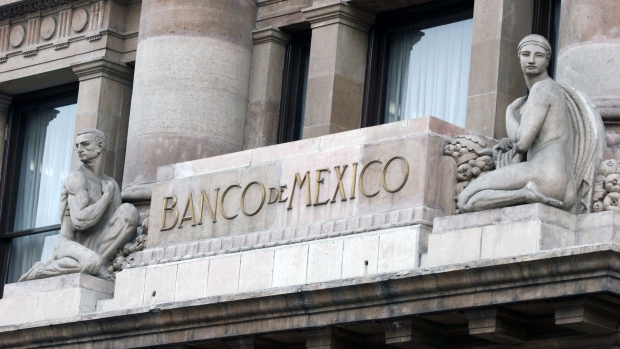Mar 22, 2023
Banco de Mexico Will Have to Do More on Inflation, Espinosa Says
, Bloomberg News

(Bloomberg) -- Deputy Governor Irene Espinosa said the Banco de Mexico will have to push interest rates higher in order to bring inflation in Latin America’s second-largest economy under control.
“Core inflation has been very resistant to decline,” Espinosa told Bloomberg Television’s Mark Cudmore and Francine Lacqua in an interview on Wednesday, referring to a measure of price gains that exclude volatile items such as food. “It is clear that sources of inflationary pressure are there and there is the need for an additional monetary effort.”
Banco de Mexico, which has continued raising interest rates even while some of Latin America’s inflation-targeting central banks have stopped, has increased borrowing costs 700 basis points since June 2021, taking borrowing costs to a record 11%. Analysts in a Citi survey published this week forecast that the bank known as Banxico will hike by a quarter-point at its next decision March 30, though the US Federal Reserve’s upcoming decision could influence Banco de Mexico’s next move.
Espinosa, Banxico’s longest-serving board member, was in favor of the surprise 50 basis-point hike agreed upon in the February decision but dissented in the minutes on the grounds that the bank should be “extremely cautious” with forward guidance. Banxico had said in its post-decision statement that its next upward adjustment to the key rate could be “of lower magnitude,” a possibility that Governor Victoria Rodriguez Ceja said was still being considered during an interview with Bloomberg News last week.
Red More: Banxico Still Mulling Smaller Rate Hike Amid Banking Turmoil
Mexico’s inflation slowed to 7.5% in the last two weeks of February after touching 8.8% in August. Core inflation also improved to 8.21% in the same period.
“The prints of inflation lately have brought some good news, nevertheless we’re in a very complex and uncertain environment, so we’ve to be very careful about how to give forward guidance,” Espinosa, who is seen as a hawkish member of Banxico’s five-person board, said in London.
The 5-year TIIE curve fell 3 basis points, paring the rise seen across the curve earlier on Wednesday following Espinosa’s remarks and while traders wait for the key Federal Reserve decision.
Espinosa said at an annual banking convention last week that she thought the Mexican banking system was safe from the kind of of shocks hammering other countries recently, largely because it’s well-capitalized and has a common regulatory framework. The country’s top finance official agreed, saying that there was no chance of broad contagion.
“All of the central banks in the world are worried about what’s happening in the banking sector,” she said Wednesday. “I would say we are confident the Mexican banking sector is in a very resilient condition. It’s well capitalized, there’s enough liquidity.”
- Click here for a video of Espinosa in Spanish
Banxico’s aggressive tightening rate cycle has helped to boost the Mexican peso, which has posted the year’s biggest gains against the dollar among the world’s main currencies tracked by Bloomberg. While the peso has given back some of those gains amid the global banking turbulence, it’s still up about 5% since the beginning of 2023.
“It illustrates the prudence in terms of macroeconomic framework and also in terms of monetary policy,” Espinosa said during the interview. “We have a lot of resilience and it showed even if you compare it to other emerging market currencies.”
(Updates market reaction in seventh paragraph.)
©2023 Bloomberg L.P.





